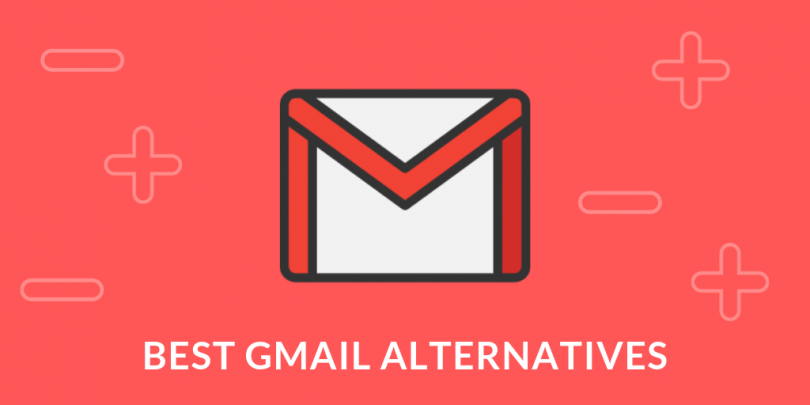
The popular email service provider Gmail isn’t the only one. In fact, for privacy, data security, and other reasons, an alternative email account may be better. Here are our favorite Gmail alternatives and how they compare.
- ProtonMail for Security
- GMX Mail for Space
- Sensitive Content: Hushmail
- iCloud Mail for iOS users
- Personalization: Mail.com
- Easiest to Use: Outlook
- Themes: Yahoo Mail
- Minimalist: Fastmail
-
ProtonMail for Security
ProtonMail has earned a reputation for being highly secure. Its end-to-end encryption and password protection make it one of the safest ways to send emails.
The free service only allows for 500MB of storage and 150 messages per day, so the monthly fee for Plus is justified. The paid service offers custom filters, folders, labels, and better customer support. Regardless, ProtonMail is very secure. With a focus on security, you won’t have to worry about email theft. ProtonMail can’t even read them.
-
GMX Mail for Space
GMX is a completely free email service with lots of ads. It’s not visually appealing, but it has plenty of storage. It can store over 500,000 emails and accepts attachments up to 50MB. Much better than other email providers, and very useful for heavy users.
It also has mobile apps for almost every platform. Other features include an online calendar and Gmail-like features. You can also add email aliases to GMX. GMX can handle simple, non-essential email.
-
Sensitive Content: Hushmail
Sending sensitive files and documents? Hushmail takes pride in being a service used by many professionals due to its encrypted security and contract support. Using the app, you can send documents and sign contracts electronically, giving you peace of mind.
A bit much for the average user who just wants an alternative email service, but worth it for those who want high-end security. You can also tie it into your existing domain names to avoid an ugly email address. 10GB storage is also a good start.
-
iCloud Mail for iOS users
iPhone or Mac user? You probably already have an iCloud email address from other services. The iCloud.com domain name isn’t exciting, but it is free and very useful. The interface is very similar to Gmail, which makes it very easy to use. Its features reflect that, with no mention of strong encryption or anything beyond the basics.
You only get 5GB of free iCloud storage at first, but it’s a good start. With all your Apple devices connected, no complicated setup is required. Changing email providers is easy for Apple users.
-
Personalization: Mail.com
Mail.com is one of the oldest names in the business and offers great personalization. You can choose from a wide range of domains for your email address. You don’t have to use @mail.com. Instead, try elvisfan.com, graduate.com, or techie.com.
The free plan works for many, but you’ll need to pay to send emails from other apps or providers via POP3. Mail.com also limits file storage to 2GB. Even if you only plan to send messages, the domain names are a lot of fun. It’s perfect for a splurge.
-
Easiest to Use: Outlook
Outlook, Windows’ iCloud, keeps things simple. Its simple interface makes it ideal for beginners and those who only need to send a few emails. It’s a great product to use if you’re a frequent Windows user. OneDrive and OneNote are integrated into the calendar and contacts sync.
However, as an email service, it can be lacking. Although it isn’t the smallest, it isn’t the best either. You can also only send files up to 5MB. Windows users can’t go wrong here for convenience.
-
Themes: Yahoo Mail
There are some advantages and disadvantages to using Yahoo Mail. Positively, it’s incredibly simple to use. Its Gmail-like interface is ideal for sending a few emails. It also has plenty of themes to choose from to customize the interface. Yahoo Mail also allows you to send attachments up to 100MB and store up to 1000GB of emails.
Its flaw is spam. Due to the service’s age and lack of spam filters, you may receive a lot of spam. It also has a lot of ads, which isn’t good. Despite this, it is very easy to use.
-
Minimalist: Fastmail
Want ad-free service? Fastmail is ideal. It’s easy to use and your emails won’t be sold for targeted advertising. Fastmail also has great spam filters that keep unwanted content out.
But you must pay for the privilege. It’s a small monthly fee based on storage space, but it means you won’t be using this as a throwaway account. With a free trial, you can try it out, and we love the minimalist themes. It takes seconds to set up and sign in, which is great.